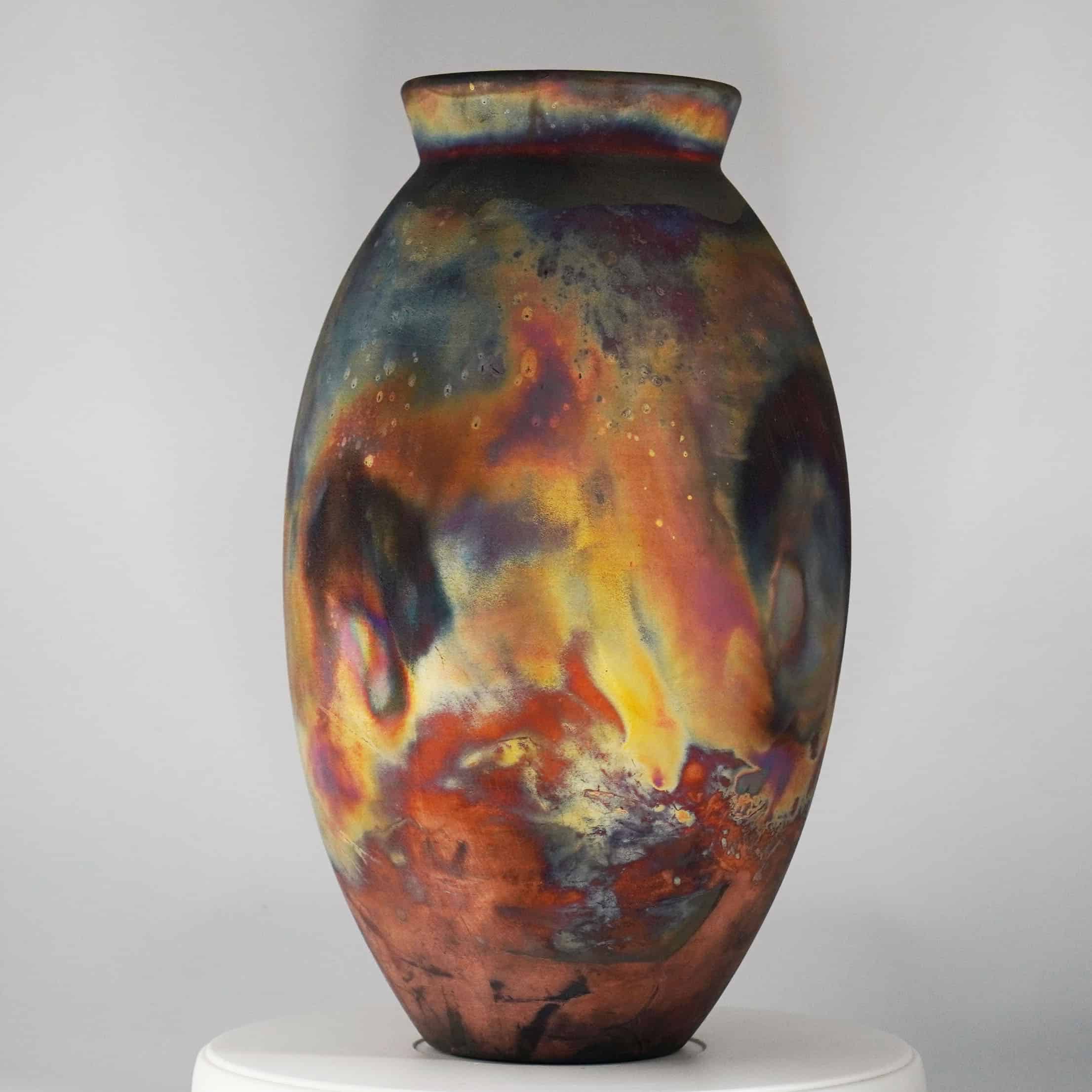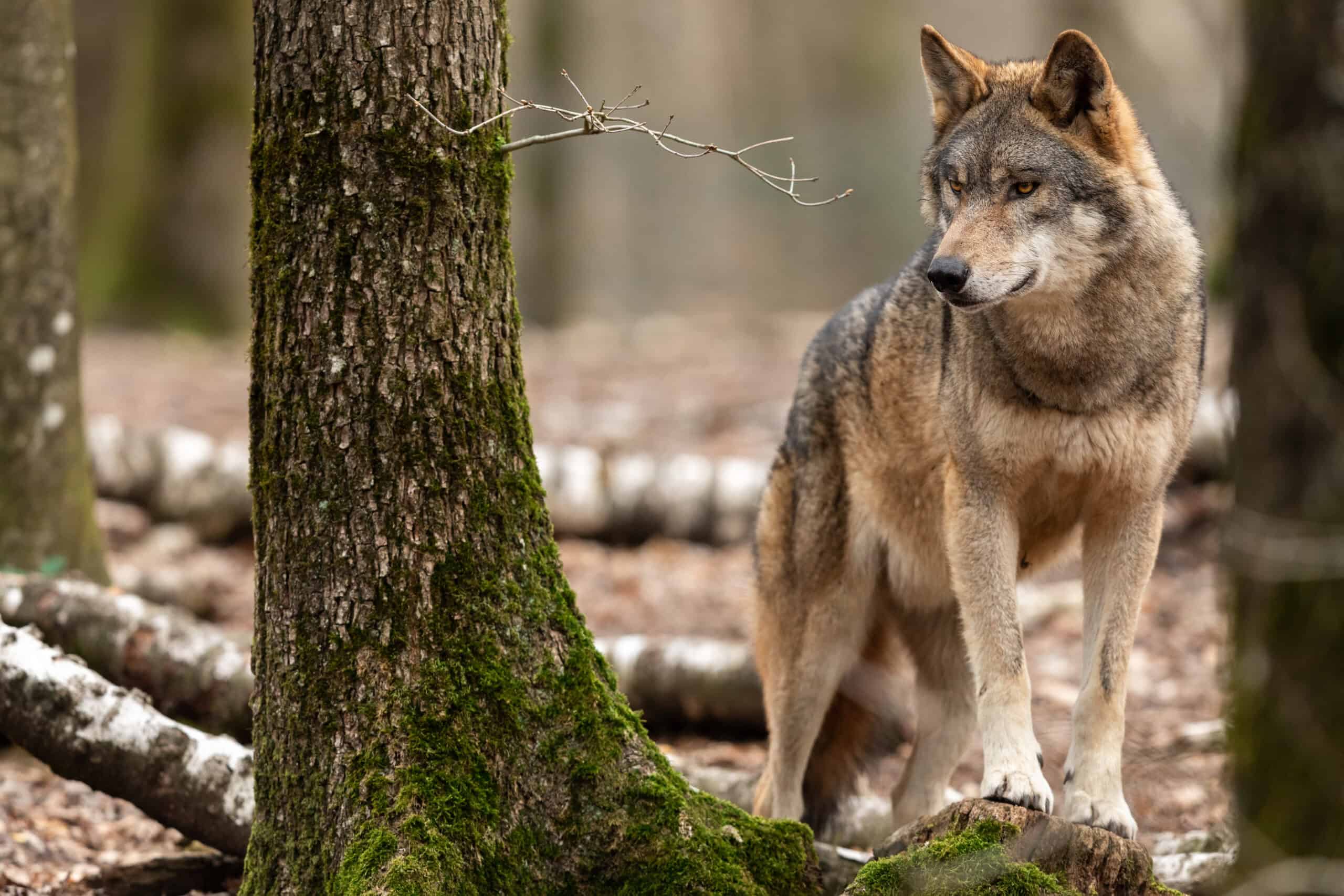Grasses are often the unsung heroes of garden design, adding texture, movement, and a natural elegance to any landscape. While many people think of grasses as simple ground cover, there are countless exotic varieties that can transform a garden into something truly special. In this article, we highlight 15 exotic grasses that can enhance any garden, bringing in unique colors, shapes, and heights that create a dynamic and visually stunning environment. Whether you’re looking to add a touch of the wild or a sophisticated flair, these grasses offer endless possibilities for garden enthusiasts.
Blue Fescue (Festuca glauca)
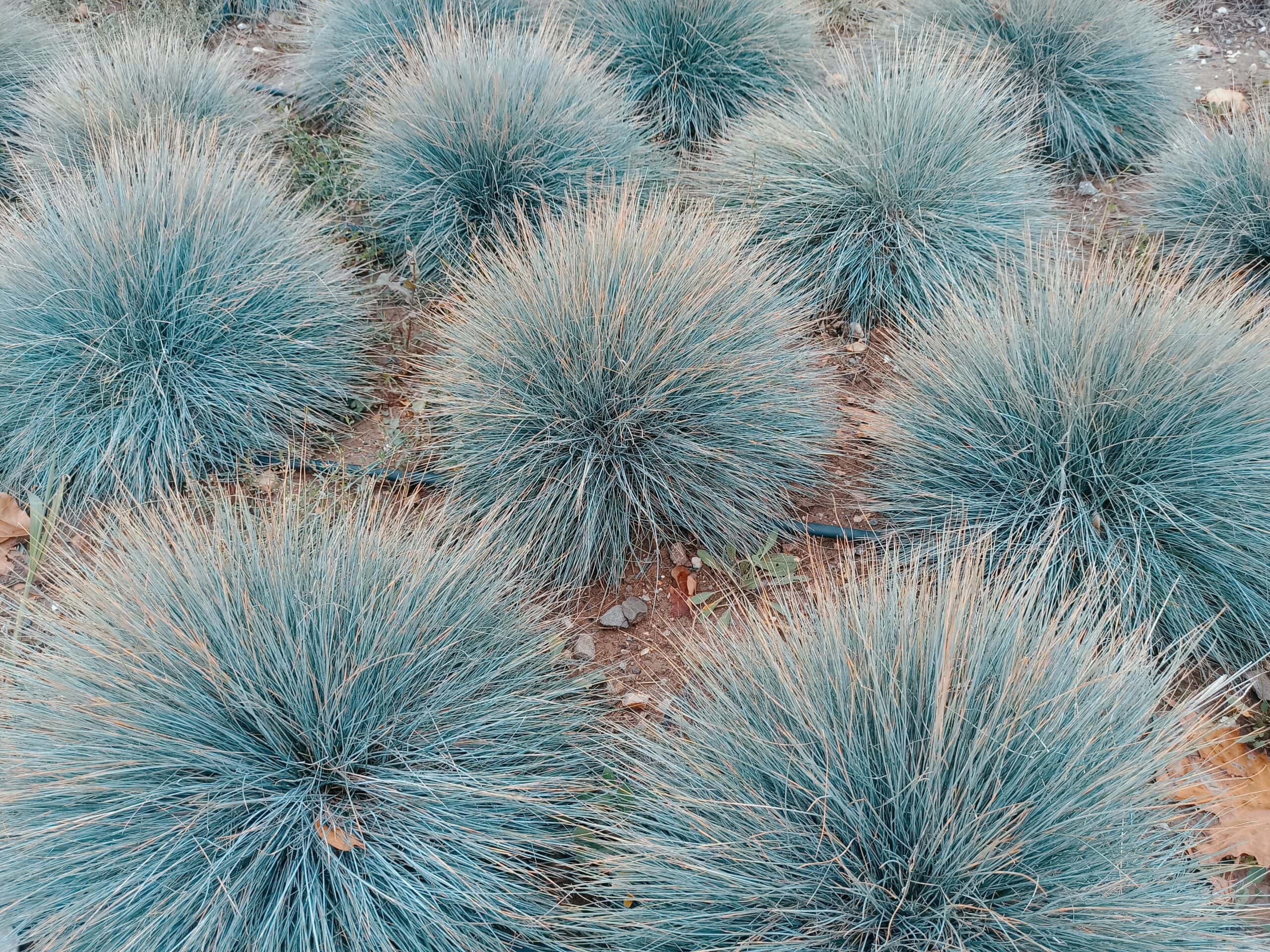
Blue Fescue (Festuca glauca) is a charming, low-growing ornamental grass that offers a stunning blue-gray hue, making it a standout in any garden. Its compact, mounded shape adds texture and color to borders, rock gardens, and groundcovers. Blue Fescue is a versatile grass that thrives in full sun and well-drained soil, making it ideal for dry, sunny locations where other plants might struggle. One of its most appealing features is its year-round color, which remains vibrant even in the winter months. In late spring to early summer, delicate green flowers with a hint of purple rise above the foliage, adding a touch of elegance to its already striking appearance. This grass is drought-tolerant and requires minimal maintenance, making it a perfect choice for gardeners looking for a low-maintenance, yet visually impactful plant. Whether planted in mass or used as an accent, Blue Fescue brings a cool, refreshing contrast to warmer-toned plants, enhancing the overall aesthetic of the garden.
Fountain Grass (Pennisetum alopecuroides)

Fountain Grass (Pennisetum alopecuroides) is a popular ornamental grass known for its graceful, arching shape and soft, feathery plumes that dance in the breeze. This warm-season grass is prized for its texture and movement, which add a dynamic quality to garden landscapes. Fountain Grass thrives in full sun and well-drained soil, making it a versatile choice for borders, foundations, and open areas. Its feathery plumes, which appear in late summer, start as a soft, greenish hue and mature into a rich, golden brown by fall, creating a beautiful contrast against its dark green foliage. Some varieties, like ‘Cassian’s Choice,’ even offer striking fall colors, with the foliage turning golden with red tints. Fountain Grass is also deer-resistant and drought-tolerant, making it an excellent choice for gardens in dry or rural areas. Its ability to maintain its form and color through the winter adds year-round interest to the garden, making it a must-have for any landscape design.
Little Bluestem (Schizachyrium scoparium)
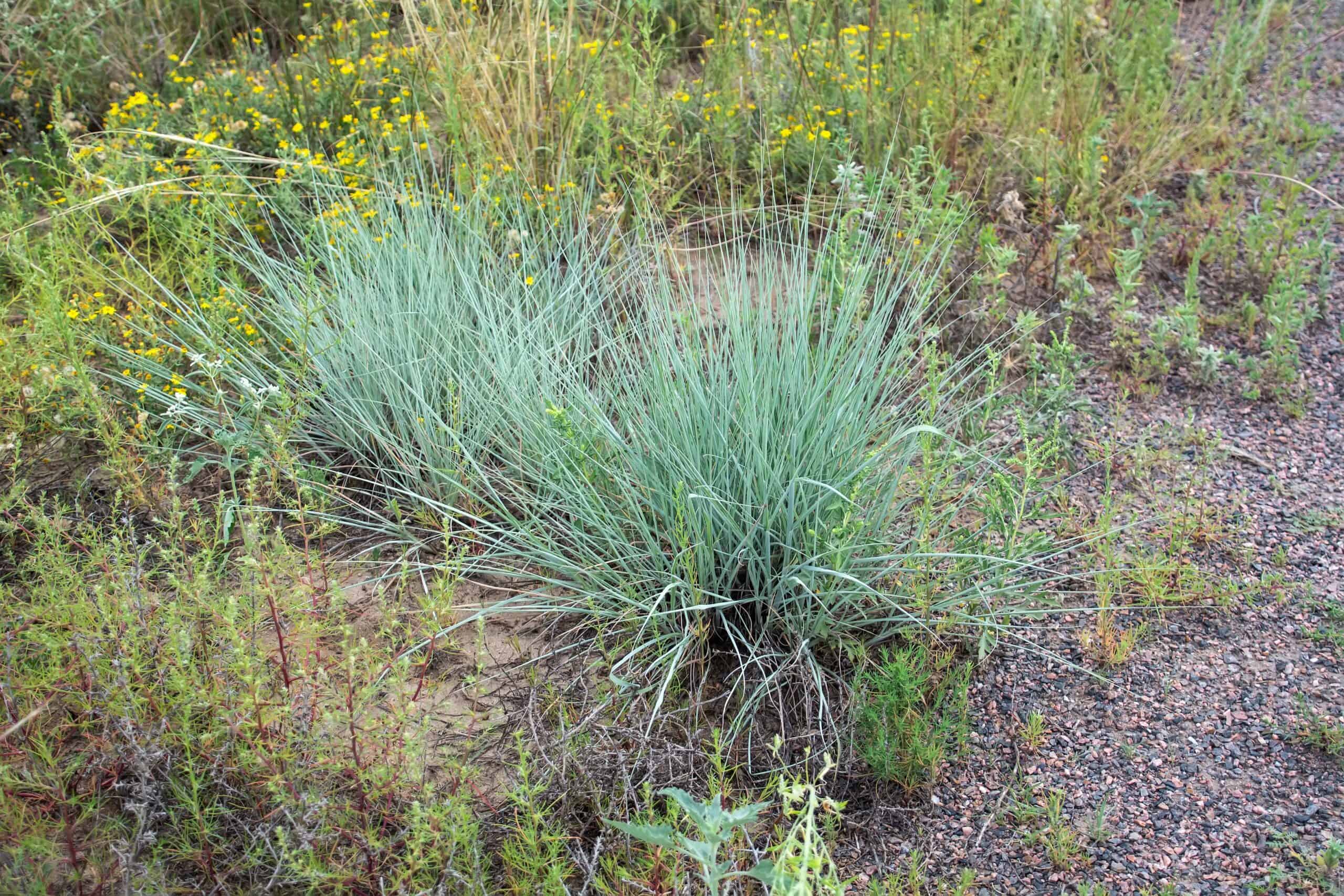
Little Bluestem (Schizachyrium scoparium) is a native prairie grass that brings both beauty and resilience to garden landscapes. This warm-season grass is celebrated for its stunning color palette, which changes with the seasons. In the summer, its slender, upright blades boast a unique lavender-blue hue at the base, creating a cool, refreshing presence in the garden. As the season progresses, the foliage turns a warm, bronze-orange, providing a striking contrast to the autumn landscape. Little Bluestem also produces purplish-bronze flowers in late summer, followed by silvery-white seed heads that persist into winter, adding texture and visual interest during the colder months. This grass is exceptionally drought-tolerant and thrives in full sun and well-drained soil, making it an ideal choice for low-maintenance gardens. Its deep roots make it an excellent option for erosion control on slopes or in naturalized areas. Little Bluestem is not only a visually stunning addition to any garden but also a valuable habitat for wildlife, attracting birds and providing cover for small animals.
Switchgrass (Panicum virgatum)
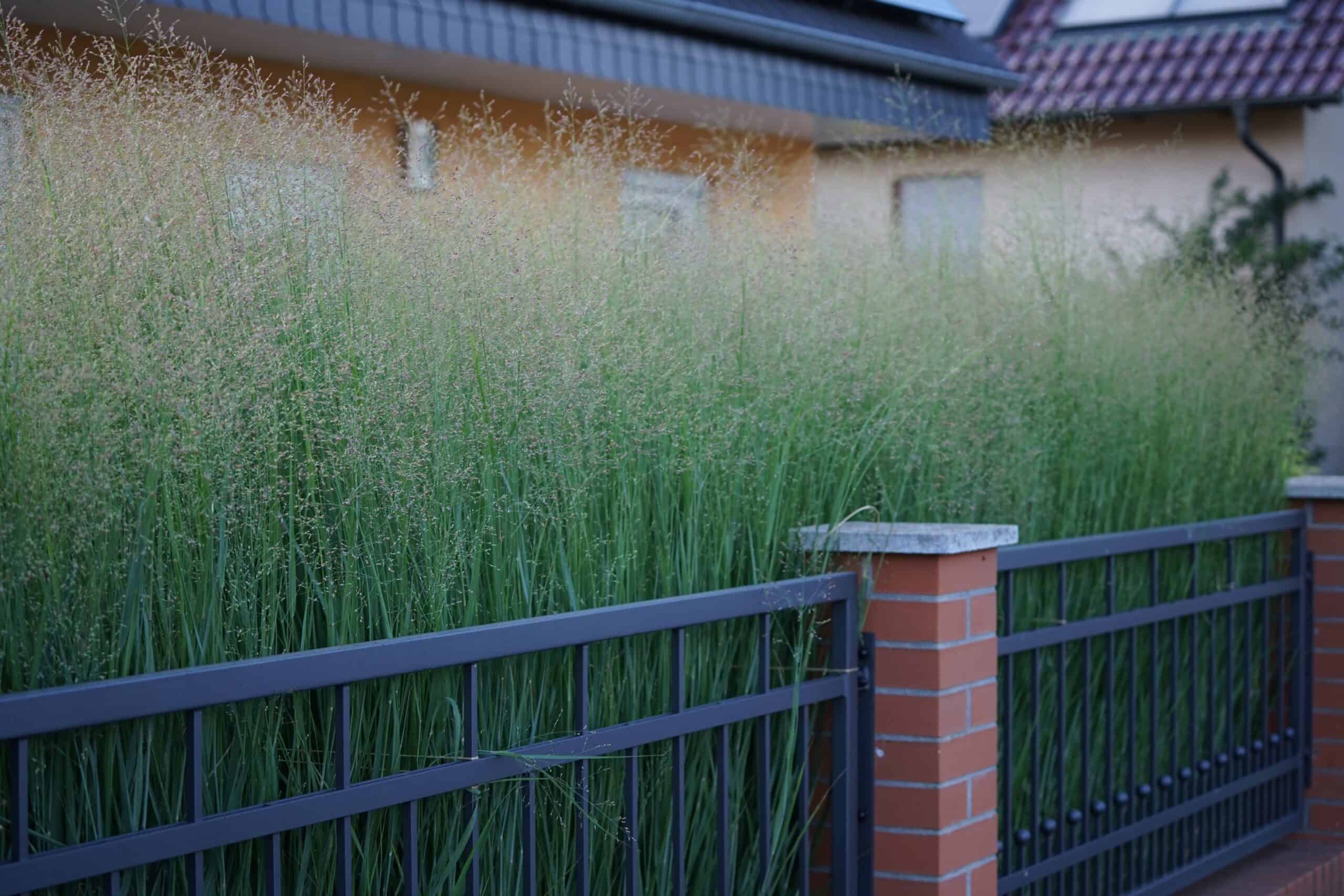
Switchgrass (Panicum virgatum) is a versatile and hardy ornamental grass that offers a range of uses in the garden, from privacy screens to stunning focal points. This North American native grass is known for its tall, upright form and airy, cloud-like plumes that appear in late summer and persist through the fall. Switchgrass is available in various cultivars, each offering unique foliage colors, from blue-gray to deep green, and in some cases, vibrant shades of red or gold in the fall. One of the most popular varieties, ‘Dallas Blues,’ features broad, blue-gray leaves that turn a striking gold in autumn. Switchgrass thrives in full sun and well-drained soil, making it a resilient choice for a variety of landscapes. It is particularly well-suited for use as a privacy screen around pools or patios or as an accent in large decorative containers. Its tolerance for drought, poor soil conditions, and even flooding makes Switchgrass an easy-to-grow option for gardeners seeking both beauty and functionality in their garden design.
Reed Grass (Calamagrostis x acutiflora)
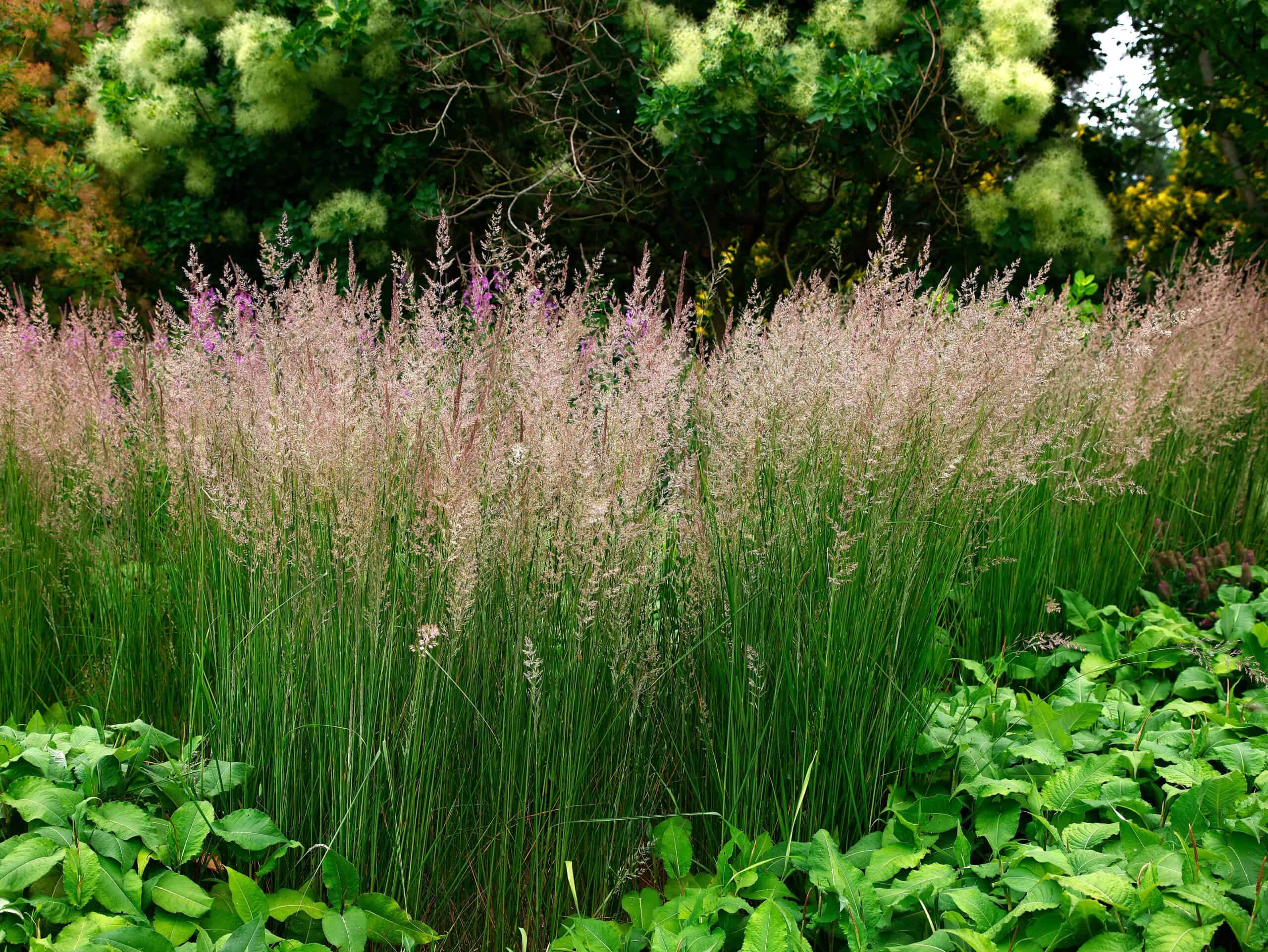
Reed Grass (Calamagrostis x acutiflora), particularly the cultivar ‘Karl Foerster,’ is a favorite among gardeners for its tall, slender form and ability to create strong vertical accents in the landscape. This cool-season grass is known for its early growth in spring, providing interest long before many other grasses have emerged. The upright, green foliage is complemented by tall, narrow flower plumes that appear in early summer, initially green but maturing to a buff color that lasts well into winter. This persistent beauty makes Reed Grass a valuable addition to any garden, offering year-round interest with minimal maintenance. It thrives in full sun and well-drained soil, and its upright habit makes it ideal for use in borders, as a backdrop for perennials, or as a screening plant. Reed Grass is also highly adaptable, tolerating a range of soil conditions and even some shade, though its best performance comes in sunny locations. Its architectural form and ease of care make Reed Grass an essential component of modern garden design.
Blue Oat Grass (Helictotrichon sempervirens)
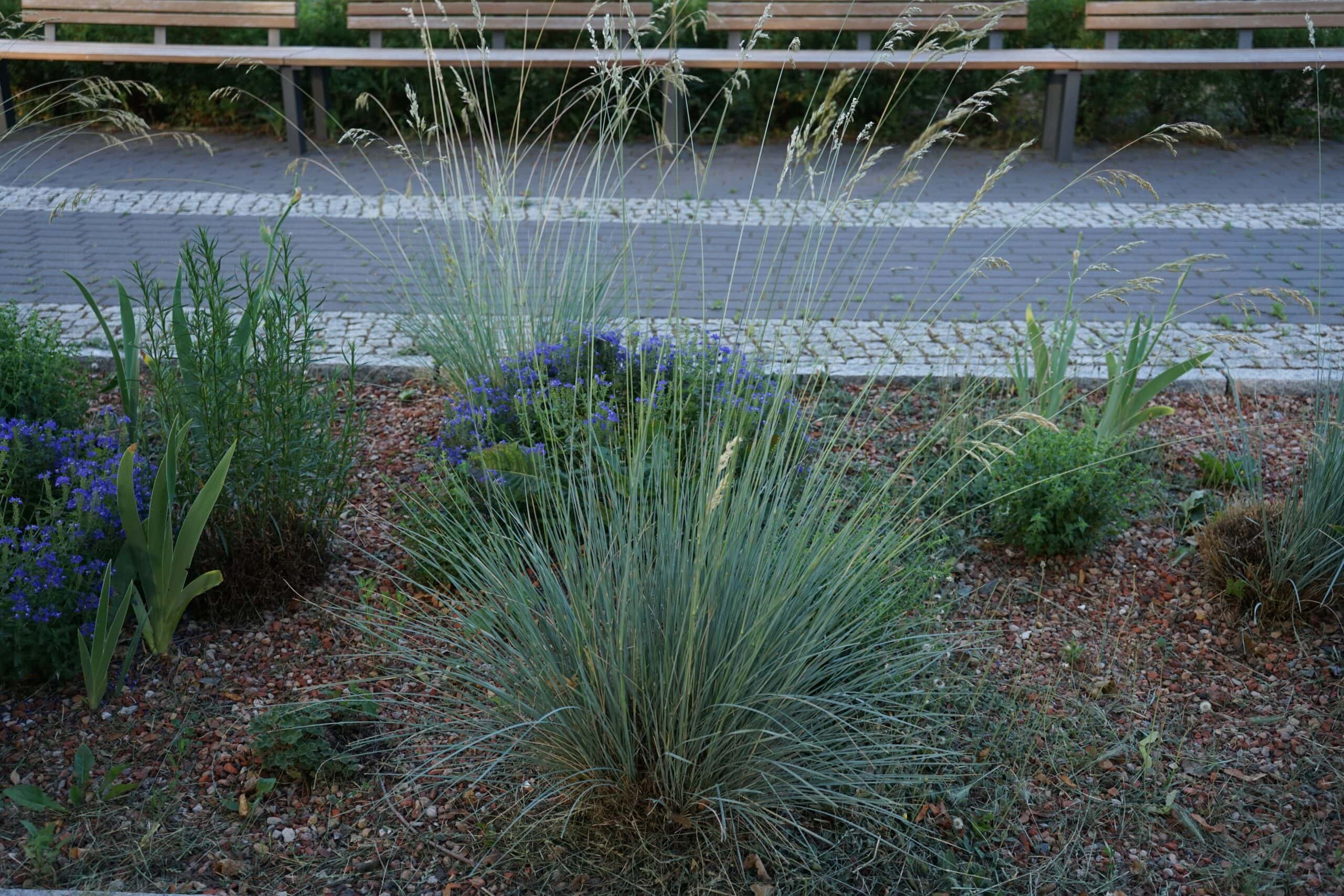
Blue Oat Grass (Helictotrichon sempervirens) is a striking ornamental grass that adds a touch of elegance and texture to garden landscapes. Its steel-blue foliage forms neat, rounded clumps that provide a cool, calming contrast to the warmer tones of other plants. This evergreen grass maintains its color year-round, making it a valuable addition to gardens that need visual interest during the winter months. In the summer, Blue Oat Grass produces tall, slender flower spikes that rise above the foliage, bearing delicate, bluish-brown flowers that mature to a golden wheat color by fall. This grass is drought-tolerant and thrives in full sun and well-drained soil, making it a low-maintenance option for rock gardens, borders, and even containers. Its tidy, non-spreading habit makes it an excellent choice for small spaces or as a specimen plant. Blue Oat Grass’s refined appearance and ease of care make it a popular choice for gardeners looking to add a touch of sophistication to their outdoor spaces.
Hakone Grass (Hakonechloa macra)
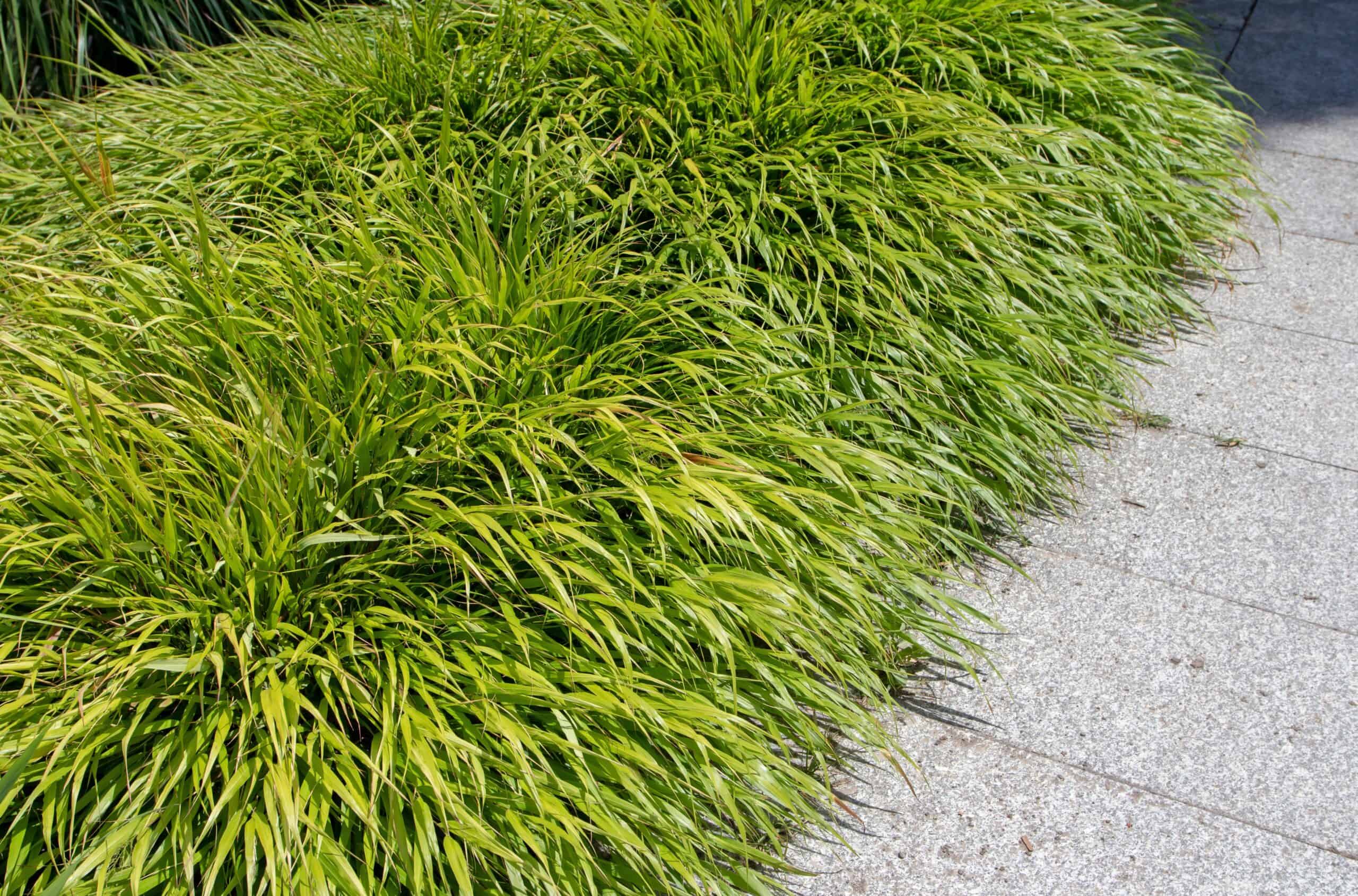
Hakone Grass (Hakonechloa macra), also known as Japanese Forest Grass, is a shade-loving ornamental grass that brings a graceful, cascading effect to garden landscapes. This low-growing grass is renowned for its soft, arching blades that form dense mounds of vibrant green or variegated foliage. Cultivars such as ‘Aureola’ or ‘All Gold’ are particularly prized for their bright yellow or golden hues, which can light up even the darkest corners of the garden. Hakone Grass thrives in part shade and moist, well-drained soil, making it an ideal choice for woodland gardens, shaded borders, or as an underplanting for trees and shrubs. Its slow growth and tidy habit mean it requires minimal maintenance, and it is generally pest and disease-free. In the fall, the foliage of Hakone Grass may take on a reddish tint, adding seasonal interest. This grass’s ability to thrive in low-light conditions, coupled with its elegant form and striking color, make it a must-have for any garden seeking to achieve a serene, naturalistic look.
Purple Millet (Pennisetum glaucum)
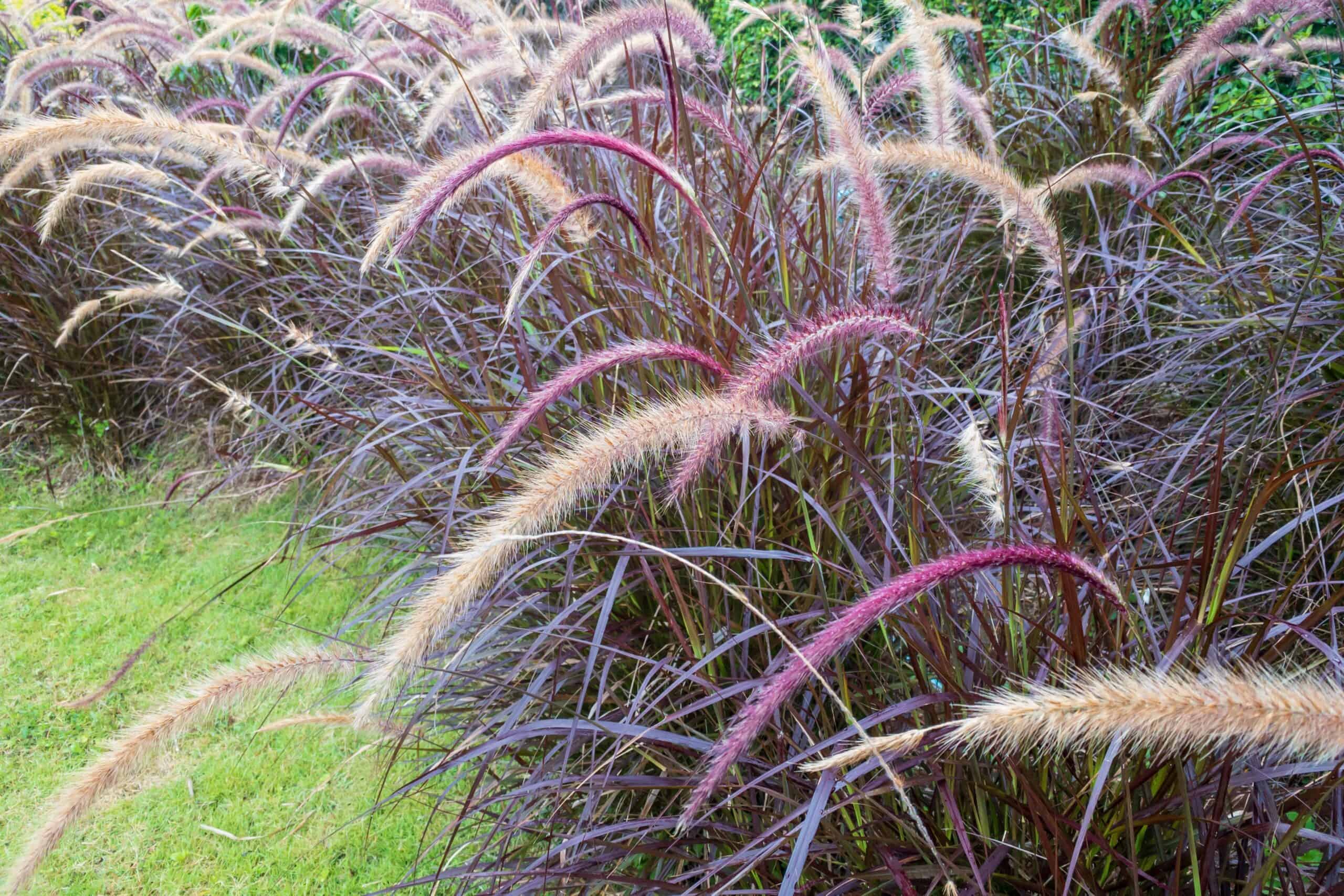
Purple Millet (Pennisetum glaucum) is an exotic and eye-catching ornamental grass that adds dramatic color and texture to the garden. Known for its striking burgundy-purple foliage, this grass creates a bold statement wherever it is planted. The foliage is complemented by tall, dense flower spikes that resemble fuzzy cattails, adding vertical interest to garden beds and borders. Purple Millet is a tough annual grass that thrives in full sun and well-drained soil, making it an excellent choice for hot, dry climates. It is also drought-tolerant once established, requiring minimal watering. The compact selection ‘Purple Majesty’ is particularly popular for its deep purple stems, leaves, and flower heads, which provide a rich contrast to green foliage or flowering plants. This grass is not only ornamental but also functional, attracting birds that feast on its seeds. Whether used in containers, as a focal point in the garden, or mixed into perennial borders, Purple Millet brings a touch of exotic flair to any outdoor space.
Prairie Cordgrass (Spartina pectinata)
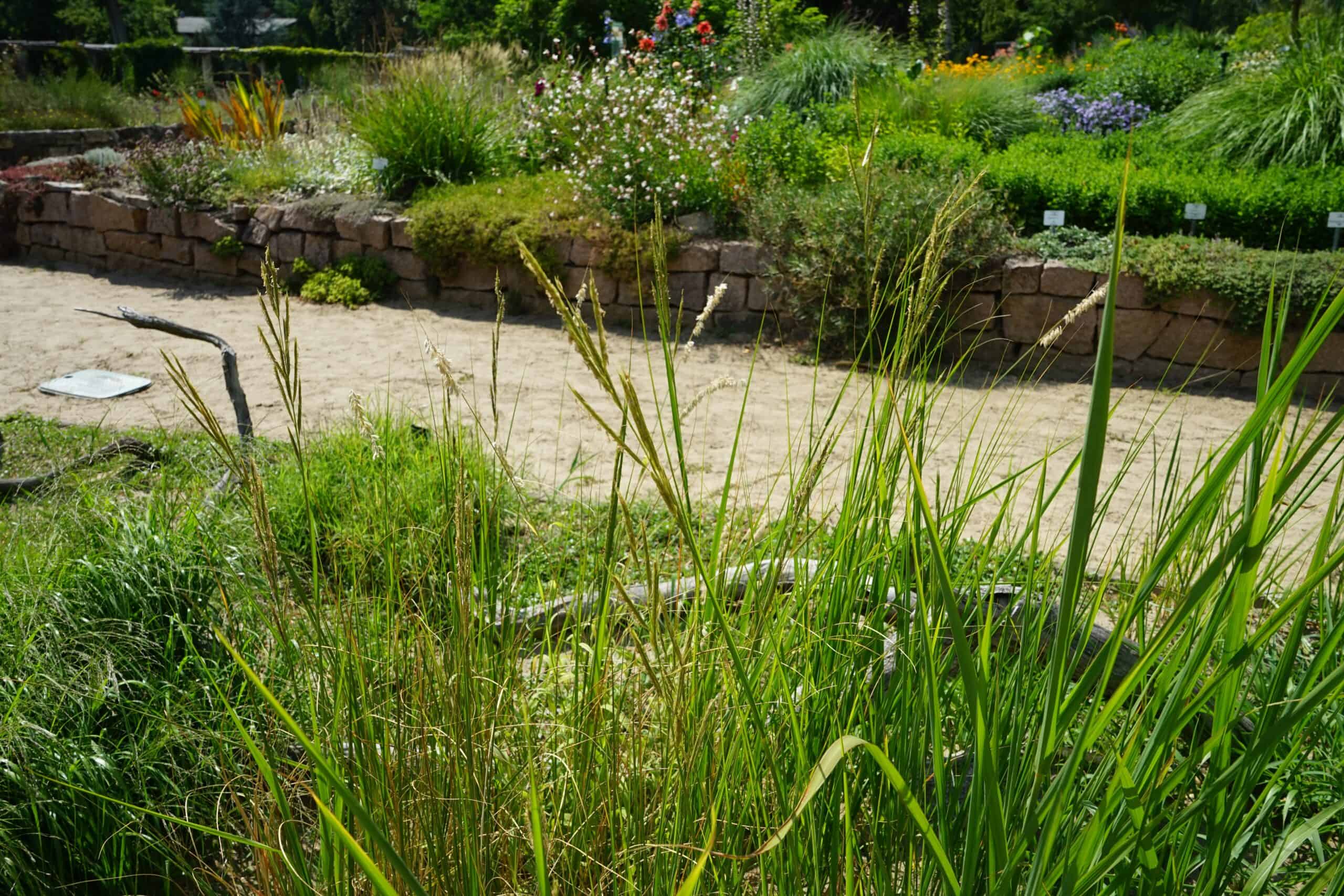
Prairie Cordgrass (Spartina pectinata) is a robust and versatile ornamental grass that excels in moist or wet environments, making it a valuable addition to gardens with challenging conditions. This tall, native grass is commonly found along the edges of ponds, streams, and wetlands, where it forms dense stands that provide excellent habitat for wildlife. Prairie Cordgrass is known for its long, arching leaves that create a lush, green backdrop in the garden. In late summer, it produces slender flower spikes that rise above the foliage, adding a subtle, graceful movement to the landscape. This grass is particularly useful for erosion control due to its strong, spreading root system, which helps stabilize soil in areas prone to flooding or water runoff. Prairie Cordgrass thrives in full sun and moist soil, but it can also tolerate periods of drought once established. Its adaptability, combined with its height and texture, makes Prairie Cordgrass an excellent choice for naturalistic plantings, rain gardens, or as a screening plant in wetland areas.
Fiber Optic Grass (Isolepis cernua)
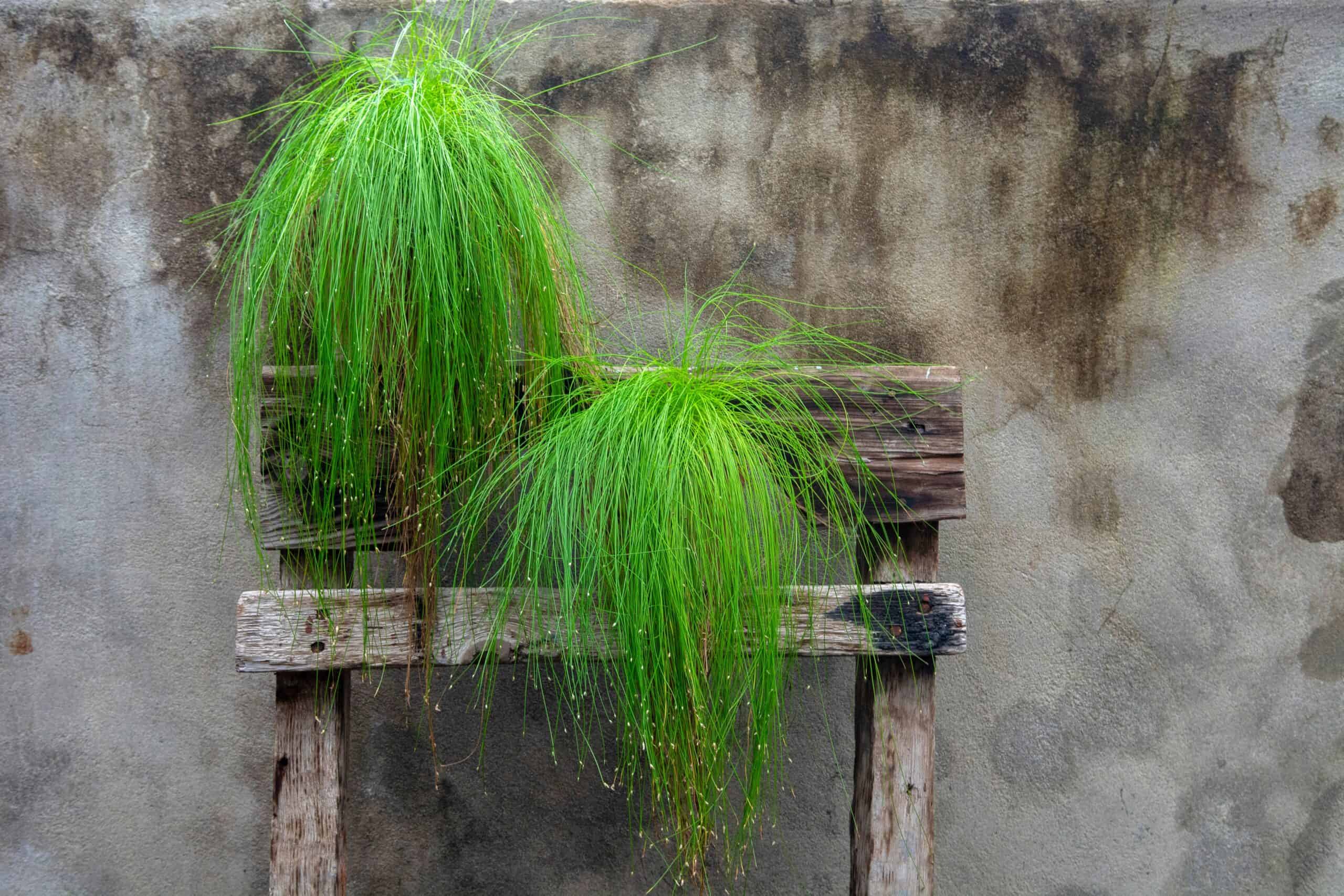
Fiber Optic Grass (Isolepis cernua) is a unique and whimsical ornamental grass that adds a playful touch to garden landscapes. Despite its name, Fiber Optic Grass is not a true grass but a sedge, known for its fine, hair-like stems that resemble the delicate fibers of an optic cable. This tender perennial, often grown as an annual in cooler climates, forms a low, dense mound of bright green foliage, making it perfect for container gardens, edging, or as a groundcover in small spaces. Fiber Optic Grass thrives in full sun to part shade and prefers consistently moist soil, making it ideal for water gardens, bogs, or areas with high humidity. Its compact size and cascading habit make it a charming addition to hanging baskets or window boxes, where its mop-like tuft of stems can spill over the edges, creating a soft, flowing effect. Fiber Optic Grass’s unusual appearance and easy-going nature make it a favorite among gardeners looking to add a touch of the unexpected to their outdoor spaces.
Maiden Grass (Miscanthus sinensis)
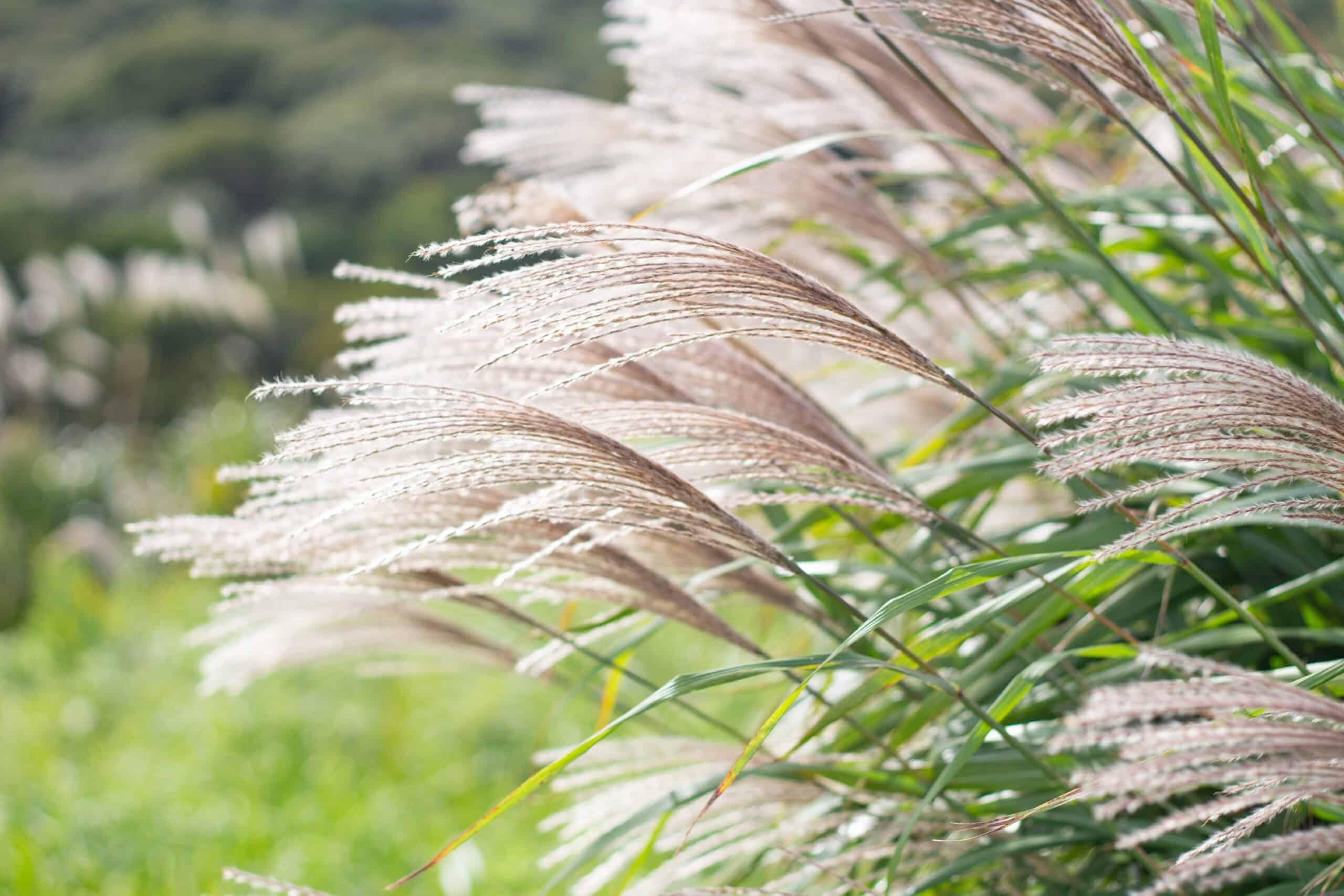
Maiden Grass (Miscanthus sinensis), also known as Chinese Silver Grass, is a towering ornamental grass that adds both height and movement to garden landscapes. This versatile grass is known for its narrow, arching foliage and feathery plumes that appear in late summer, adding a soft, airy texture to the garden. The plumes start as silvery-white but mature to a buff color, providing interest well into winter. Maiden Grass is available in various cultivars, some of which offer striking variegated foliage, such as the popular ‘Dixieland,’ which features green leaves with white stripes. This grass thrives in full sun and moist, well-drained soil, making it an excellent choice for large borders, screens, or as a specimen plant. While Maiden Grass is stunning in the landscape, it is essential to note that it can be invasive in some regions, particularly in the eastern United States. Gardeners should check local guidelines before planting and consider using sterile cultivars to prevent unwanted spread. Despite this, Maiden Grass remains a favorite for its beauty and versatility.
Purple Fountain Grass (Pennisetum setaceum ‘Purpureum’)
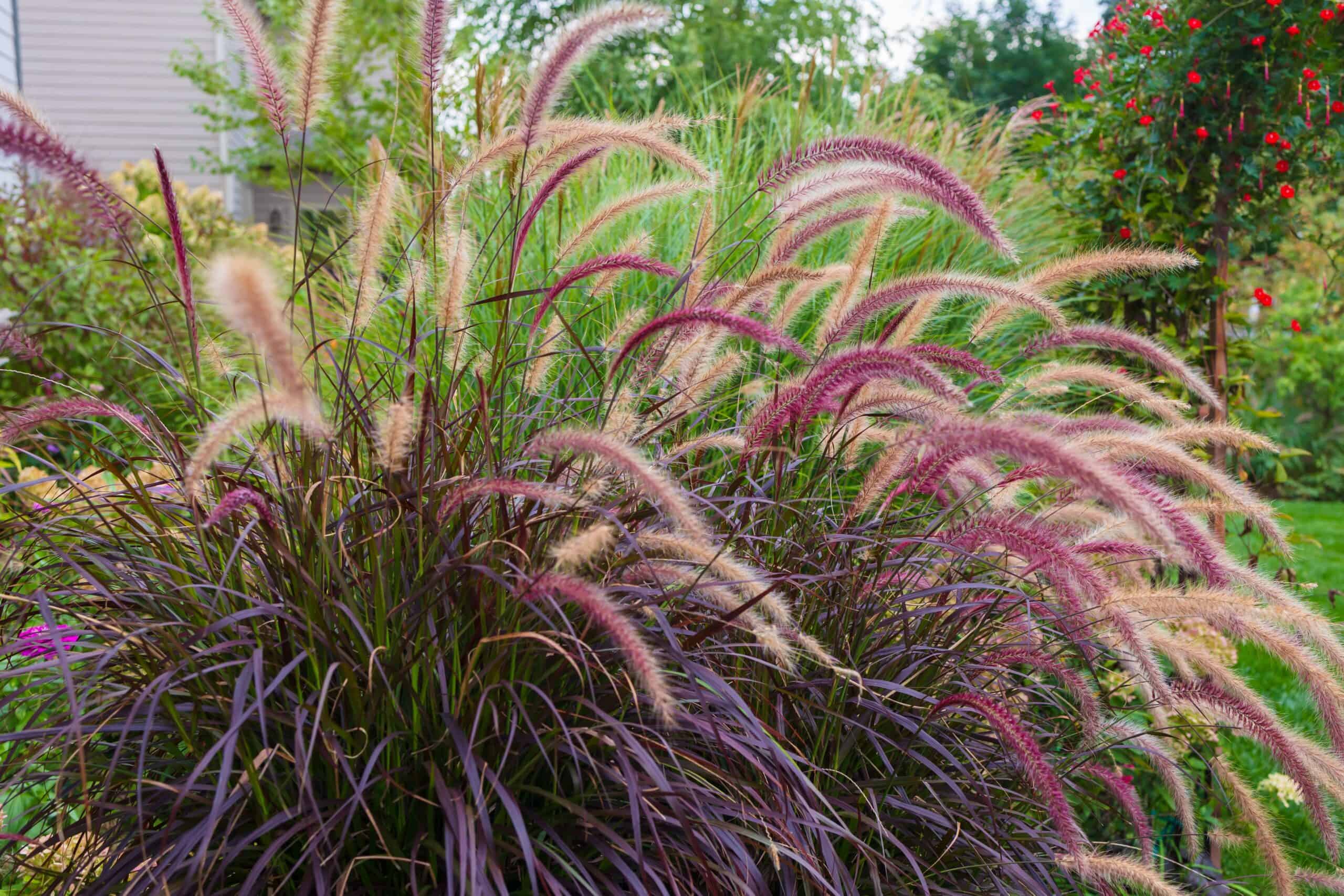
Purple Fountain Grass (Pennisetum setaceum ‘Purpureum’) is a show-stopping ornamental grass known for its deep burgundy-red foliage and striking, bottlebrush-like flower spikes. This tender perennial, often grown as an annual in cooler climates, adds a bold splash of color to garden beds, borders, and containers. The arching flower spikes appear in mid-summer and continue into fall, creating a dynamic, flowing effect as they sway in the breeze. Purple Fountain Grass thrives in full sun and well-drained soil, making it a resilient choice for hot, dry areas. Its dramatic color and form make it an excellent companion plant for silver or gray-foliaged plants, as well as for bright, flowering perennials. This grass is also deer-resistant, adding to its appeal in gardens where wildlife can be a challenge. Whether used as a focal point or in mass plantings, Purple Fountain Grass brings a touch of exotic elegance to any garden, ensuring it remains a favorite among gardeners seeking to make a bold statement.
Ravenna Grass (Saccharum ravennae)
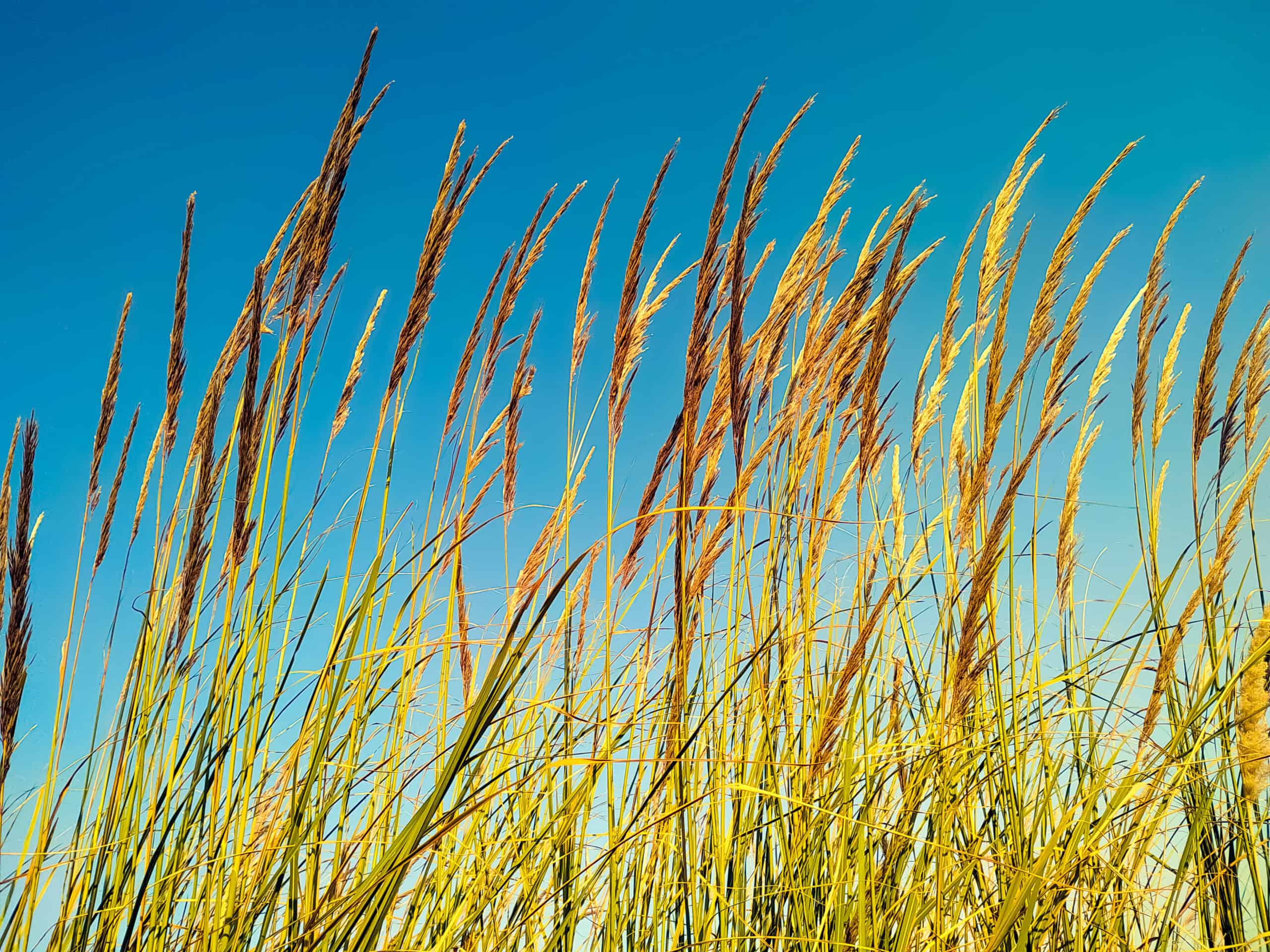
Ravenna Grass (Saccharum ravennae), also known as Erianthus, is one of the tallest and most striking ornamental grasses available, making it a dramatic addition to any garden. This grass can reach heights of up to 12 feet, with long, arching leaves and towering flower plumes that add vertical interest and movement to the landscape. The plumes start as purplish-bronze and gradually turn to silver-gray, creating a stunning contrast against the green foliage, which develops orange tones in the fall. Ravenna Grass is highly adaptable, thriving in full sun and well-drained soil, and it is particularly well-suited for large, open spaces where it can be used as a focal point or as a natural privacy screen. While this grass is beautiful, it is essential to be aware that it can be invasive in some areas, particularly in the western United States. Gardeners should check local guidelines and consider its aggressive growth habit before planting. Despite this, Ravenna Grass remains a popular choice for its height, texture, and year-round interest.
Northern Sea Oats (Chasmanthium latifolium)

Northern Sea Oats (Chasmanthium latifolium) is a unique and visually captivating ornamental grass known for its distinctive seed heads, which resemble flattened oats hanging from slender stems. This shade-tolerant grass is ideal for adding texture and movement to shaded borders, woodland gardens, or areas with dappled sunlight. The seed heads start green and gradually turn a rich, golden brown in the fall, adding warmth and interest to the garden as other plants begin to fade. Northern Sea Oats is also known for its attractive, bamboo-like foliage, which sways gracefully in the breeze, creating a soothing, rustling sound. This grass is relatively low-maintenance, thriving in full sun to part shade and well-drained soil, and it is particularly useful for erosion control on slopes or in naturalized areas. However, it is essential to note that Northern Sea Oats can spread aggressively, so it is best planted in contained areas or regularly monitored to prevent unwanted spread. Despite this, its unique appearance and versatility make Northern Sea Oats a valuable addition to any garden.
Purple Moor Grass (Molinia caerulea)
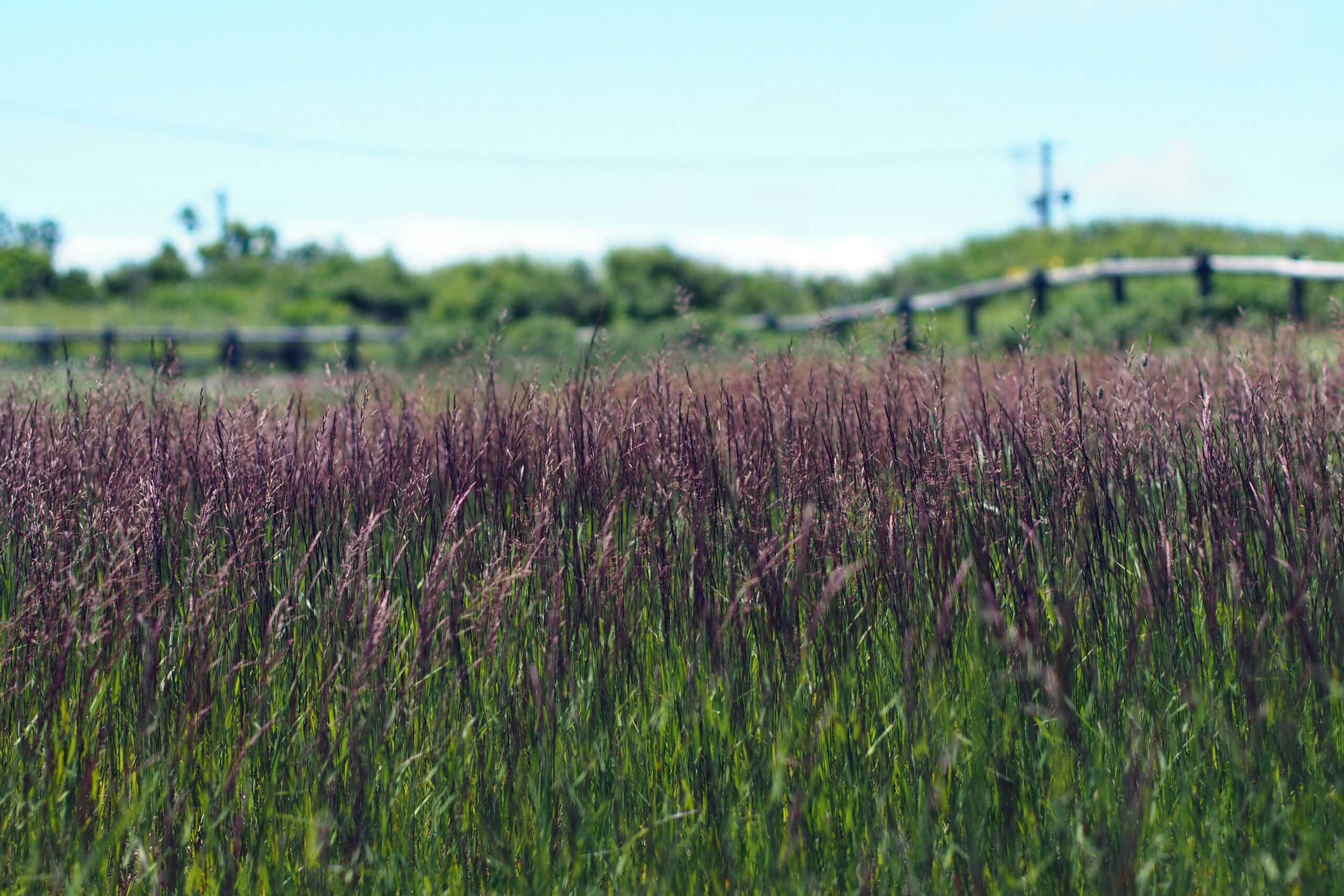
Purple Moor Grass (Molinia caerulea) is a versatile and attractive ornamental grass that adds a touch of elegance to a variety of garden settings. This cool-season grass is known for its fine-textured, arching foliage that forms neat, mounding clumps, making it an excellent choice for borders, meadows, or naturalistic plantings. In late summer, Purple Moor Grass produces tall, airy flower spikes that rise above the foliage, creating a delicate, see-through effect that softens the landscape. The flowers start as green and white but gradually fade to shades of beige and brown, providing subtle color through the fall. In autumn, the foliage turns a warm golden yellow, adding seasonal interest to the garden. Purple Moor Grass is particularly well-suited to gardens with cooler summer climates, and it thrives in full sun to part shade and moist, well-drained soil. Its ability to blend seamlessly with other plants, coupled with its graceful form and seasonal color changes, makes Purple Moor Grass a favorite among gardeners seeking to create a serene, naturalistic landscape.
This article originally appeared on Rarest.org.
More from Rarest.org
Exploring the world’s most lavish resorts and hotels offers a glimpse into unparalleled luxury. Read more.
Pottery is an ancient art that has evolved into a fascinating array of techniques. Some methods create truly unique pieces that stand out for their beauty and originality. Read more.
Efforts to reintroduce species into their natural habitats have become crucial in the fight against extinction. Read more.


